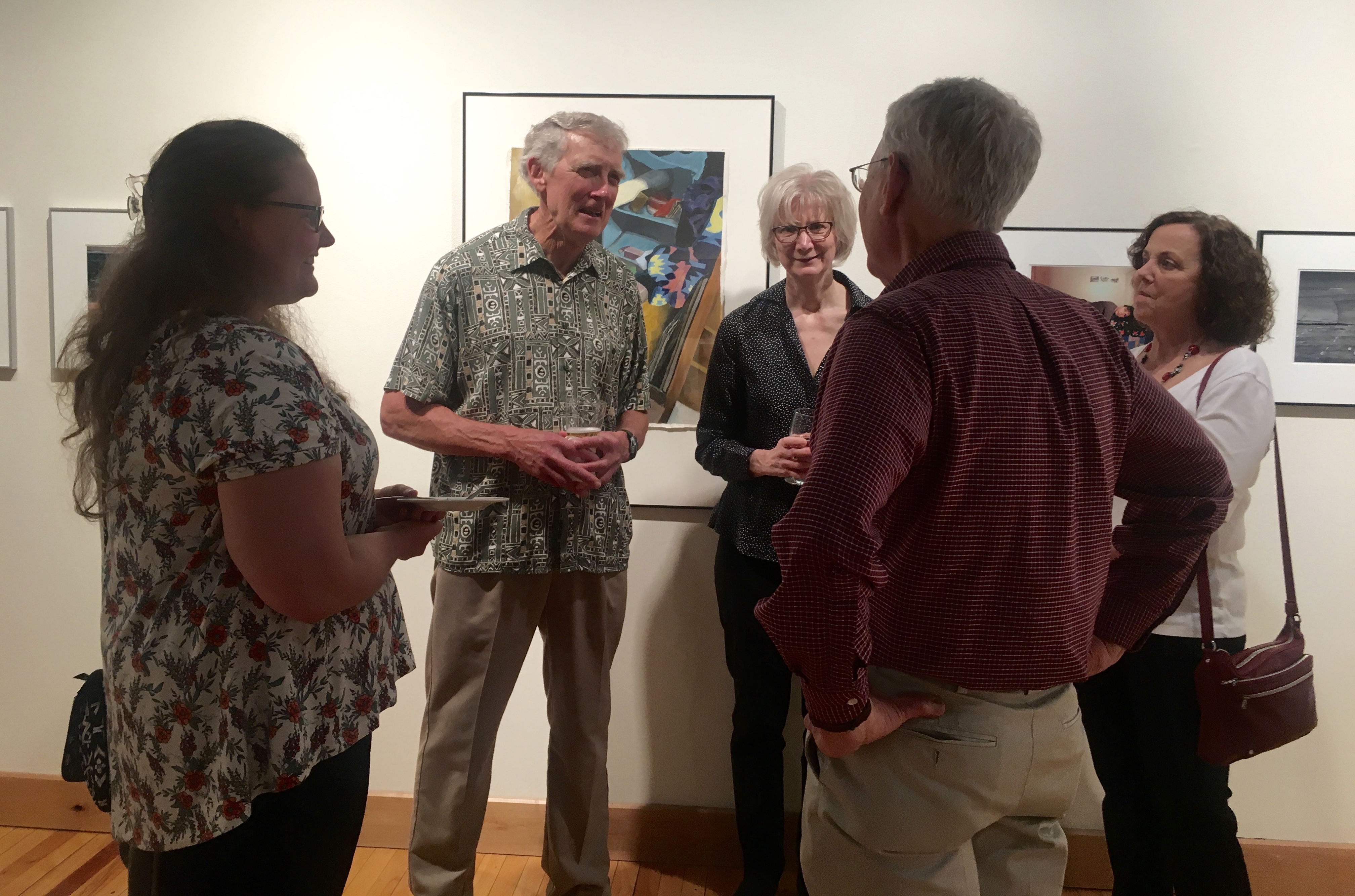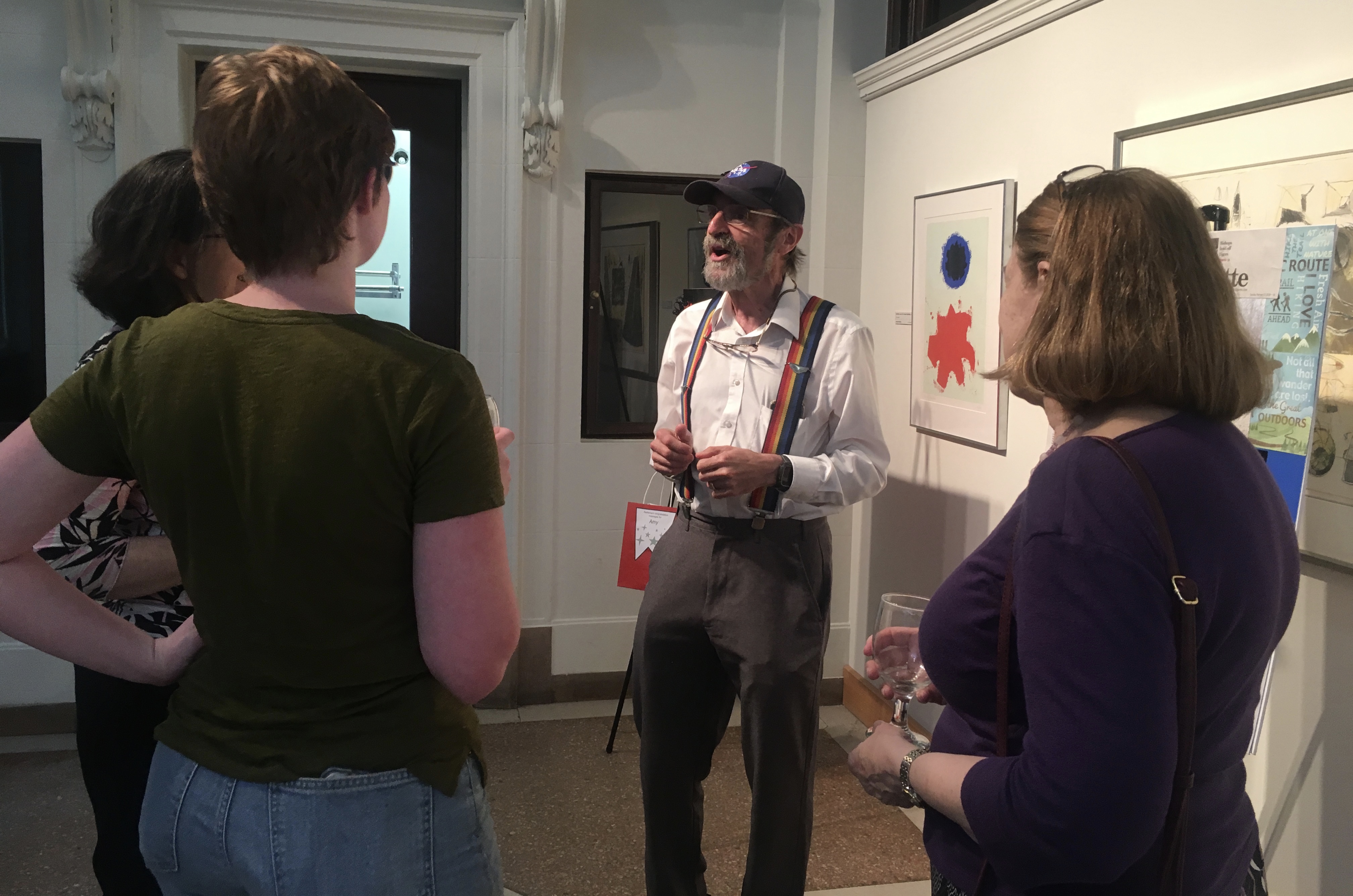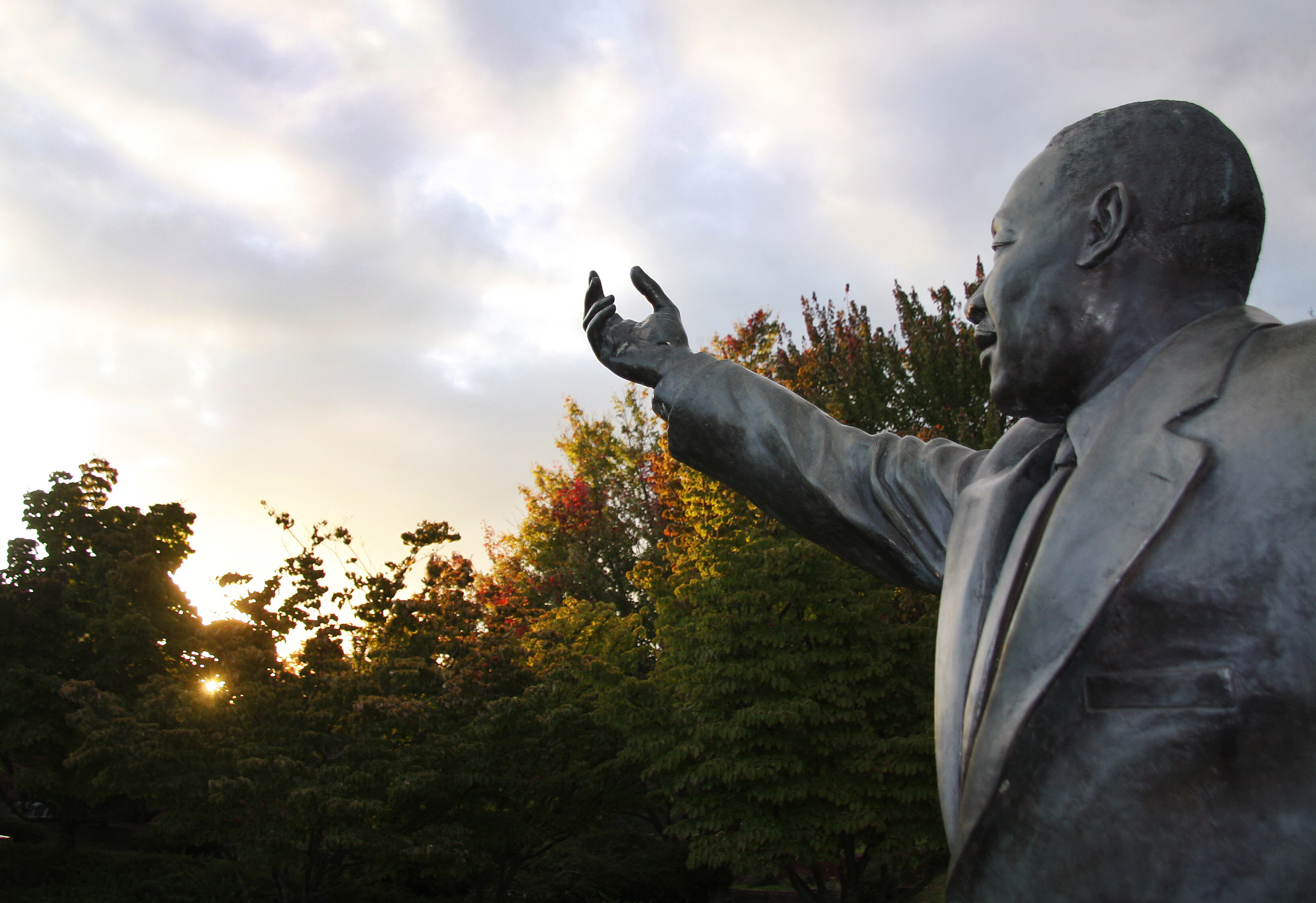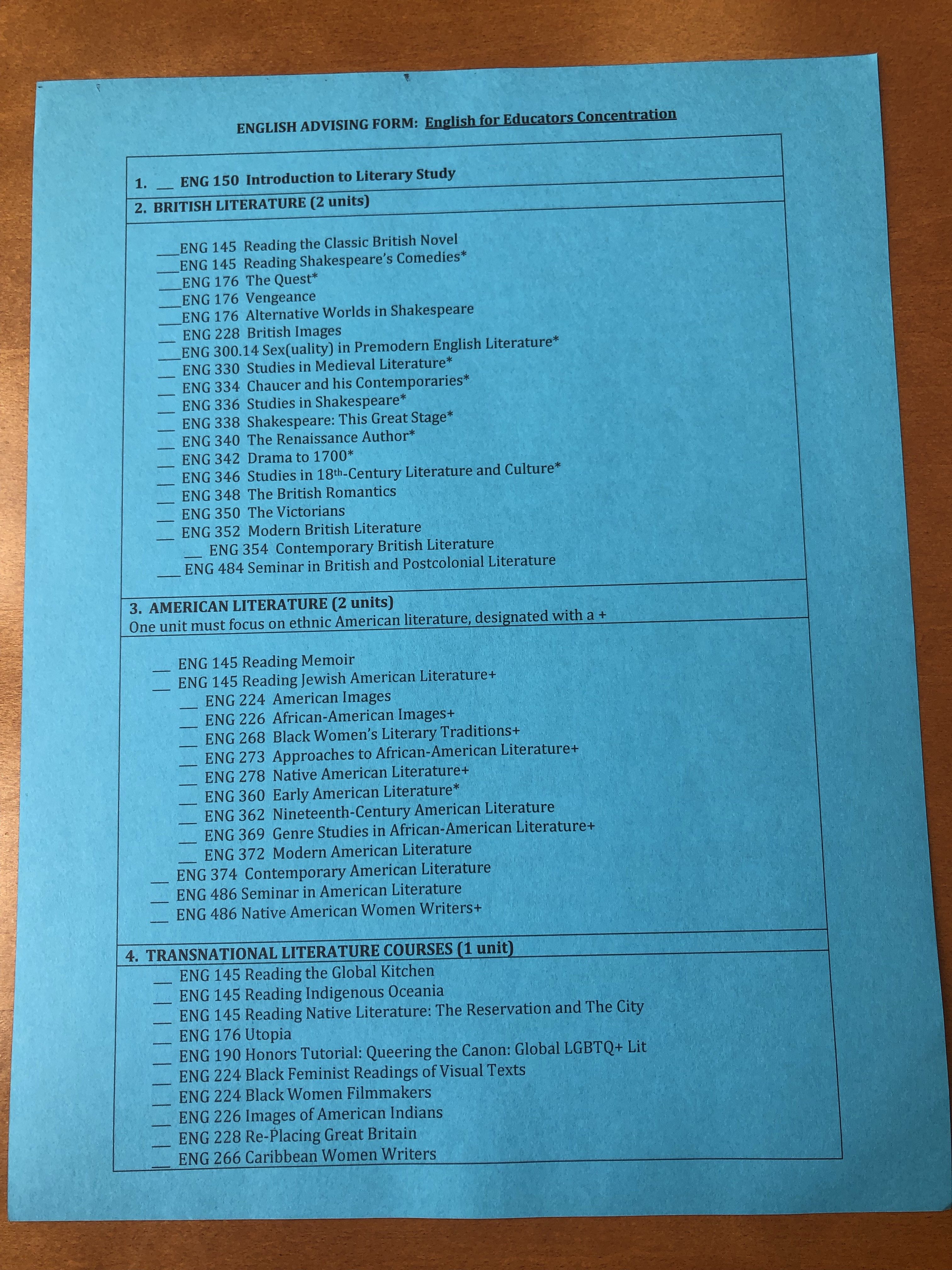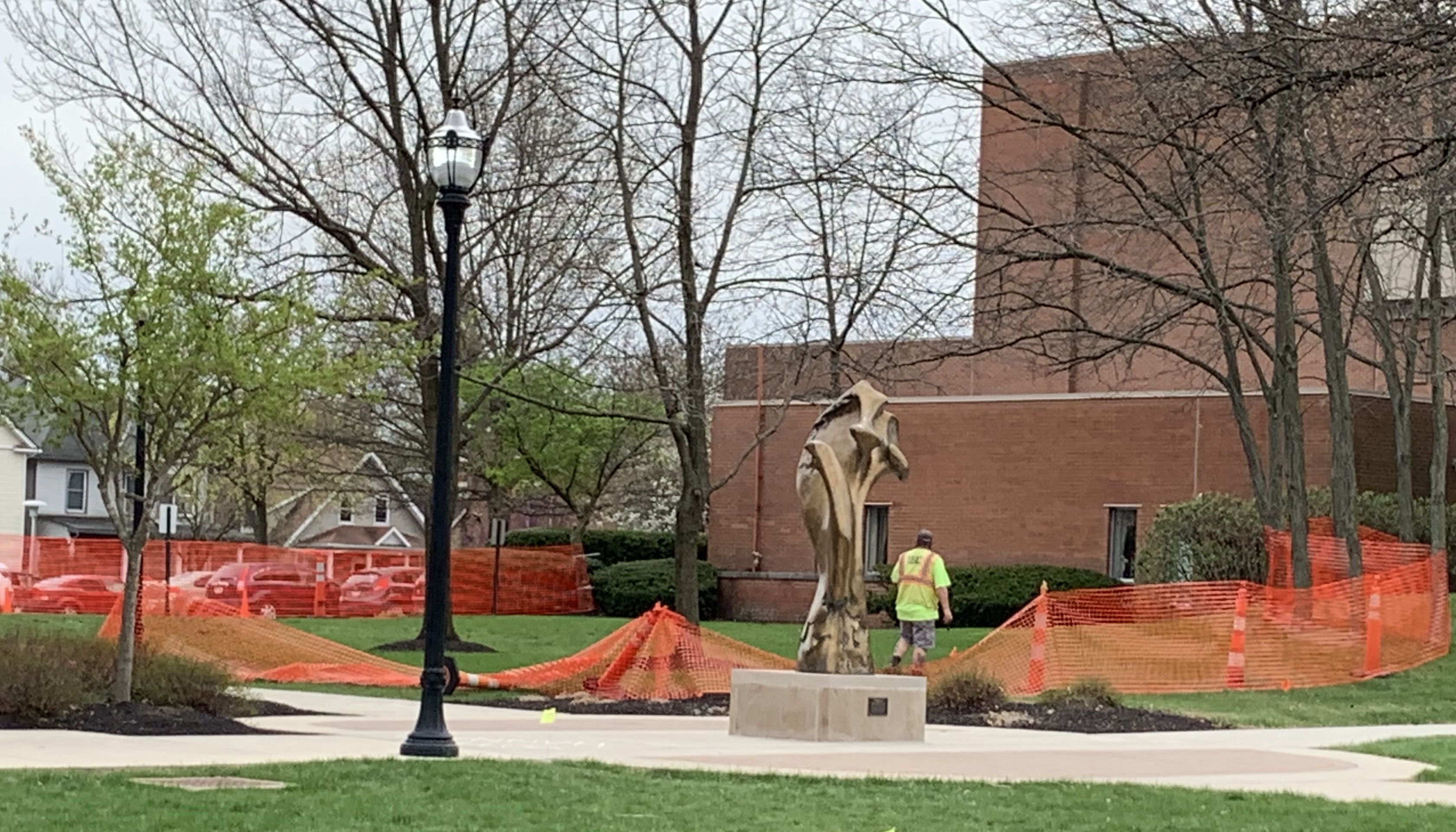Paul Kostyu has decided to retire. He was the head of the Journalism Department and taught classes such as media law, photojournalism, editing and design and etc. Dr. Kostyu was also nominated for the Pulitzer Prize in 2004 and has worked for papers out of state. He was at the Ft. Lauderdale Airport during the shooting and was able to take photos which were spread through the Associate Press. He will be dearly missed!
John Gatz retiring
John Gatz has decided to retire. Gatz was a Zoology professor and taught classes such as evolution, vertebrates, population, community ecology and etc. He also has published works about thermobiology of jellyfish, sexual selection in frogs and toads, and is now researching about beavers preferences on lodge sites. Gatz will be dearly missed!
Tom Burns retiring
Thomas Burns has decided to retire after being a part-time English professor for the past 21 years. Burns has also taught astronomy classes and is the director of Ohio Wesleyan’s Perkins Observatory. He will be dearly missed!
Traveling in the steps of MLK will be a new option for students
Updated April 24, 2019
By Shay Manuela
Transcript correspondent
slmanuel@owu.edu
Next Spring, Ohio Wesleyan students will have the opportunity to literally walk in the footsteps of Rev. Martin Luther King Jr.
John Durst, associate professor of sociology and anthropology, and Professor of Education Paula White will be teaching a travel-learning course in Spring 2020.
The course, which is titled “The March Continues: The Current Fight for Justice and Equality,” will examine the civil rights movement through the lenses of social justice and activism.
A special focus will be placed on understanding the historical, cultural, economic, and political dynamics of inequality and the concepts of power, privilege, and intersectionality, according to the Ohio Wesleyan website.
Class members will be traveling to Mississippi and Alabama from March 7-14, 2020, where they will visit several sites along the National Civil Rights Trail. The trail, which spans across fourteen states, features locations that played a significant role in events of the Civil Rights Era.
The civil rights movement was a mass protest movement against racial segregation and discrimination in the southern United States, according to Britannica. The primary goal of the movement, that mainly took place during the 1950s and 1960s, was for African-Americans to gain equal rights under the constitution.
Sites that will be visited along the trail include the Edmund Pettus Bridge in Selma, Alabama; the Dexter Avenue Baptist Church, where Rev. Martin Luther King Jr. began his pastorate; the Rosa Parks Museum; the Southern Poverty Law Center; and The National Memorial for Peace and Justice, a memorial dedicated to victims of white supremacy.
One of the goals is for students to draw parallels between race relations of the past and present, Durst said.
“We look at these civil right struggles and racial tensions as something of the past, yet striking similarities remain evident today,” Durst said. “One could argue that since the civil rights movement ended, there has been a lack of progress. The story is not over.”
The desire lies in getting that point across, Durst said. “This course gives the opportunity to use history to ask students ‘this is what the racial disparity represented back then—how much farther are we today?’,” Durst said.
The main motivation for the course is to have the students feel the history, rather than just learning it, Durst said.
“I am a firm believer that when you stand on the Edmund Pettus Bridge, where nonviolent activists were beaten, it has an impact beyond simply reading a factual recollection of it,” Durst said.
The concept of travel-learning courses has been designed to give students the opportunity to connect classroom instruction to real-world experiences.
Merrick Mentor and junior Brandon Stevens said, “The travel-learning courses offer a guided experience to students to dig deeper into a topic with somebody who is an expert on the subject.”
Applications for the Spring 2020 travel-learning courses will be posted at the beginning of the Fall semester.
English department to add new concentration for students
By Azmeh Talha
Transcript reporter
aatalha@owu.edu
English majors at Ohio Wesleyan University’s (OWU) will be offtered two concentrations in the major, creating a clearer path to graduation.
The concentrations that will be offered are English for Educators and a Creative Writing Concentration.
Associate Professor of English, Nancy Comorau was one of the people that worked towards getting the concentrations approved.
“I thought, what if we just had a clear set of requirements that fit what’s needed for licensure, fit what’s needed for an English major and give students one path to graduation,” Comorau said.
Under the old system, students who wanted to be English teachers and finish with licensure had to take a number of literature courses, Comorau said. The names of the courses however, were unclear and were different from the way the English department talked about where the discipline of English is going.
One of the unclear categories in the department was “ethnic or women writers” Comorau said. Comorau questioned what ethnic really means and asked faculty in the education department.
Comorau met with Professor Campbell Scribner, a former associate professor in the education department to clarify what these terms mean.
“I asked somebody in education to meet with me and I said well does ethnic mean minorities within a majority of culture, African American, Latinx etc,” Comorau said. “Or does ethnic mean nonwhite.”
Another confusing category in the English department world literature. Although it was called world literature, the category contained mainly work written by European authors.
Literature from Africa, South Asia and The Caribbean was not a part of any world literature courses. This led to Comorau questioning whether literature from this part of the world is considered to be world literature.
Mark Allison, associate professor and chair of the English department said getting the concentration approved was a collective effort of the department.
There was some ambiguity that students had to confront about which classes satisfied which requirements. This clarified what classes students should take to satisfy their requirements, making it more manageable for students, Allison said.
“Nancy Comorau in particular deserves credit for really working, collaborating with the education faculty to create the new English for educators concentration,” Allison said.
New additional courses will be offered for the creative writing concentration such as fiction, creative nonfiction and poetry, Allison said. Courses offered will be both lower and upper level classes.
“We’ve effectively almost doubled the strength of our creative writing options,” Allison said.
The motion to create the creative writing resolution was approved on Feb. 18, 2019.
The statement of rationale to create this concentration mentioned the benefits of the concentration.
“… We believe a unique major will better serve and prepare our creative writers for professional careers that extend far beyond Ohio Wesleyan University.”
The statement also mentioned the concentration will “not only attract students but retain them once they matriculate.”
New courses that will be offered are ENG 200.3: Fiction I and ENG 315: Creative Nonfiction II.
The crawfish were boiled
The Black Student Union held a crawfish boil in HamWill Benes A on April 20, 2019. The event lasted from 2PM – 5:30PM. There were grilled kabobs, burgers, hot dogs, and boiled crawfish. Guests played board games while they waited for the food.
Broken water line
OWU students have been warned about a broken water line that will block off handicap parking spaces. The water line is essential to air-conditioned the Beegly Library, the Chappelear Drama Center and Hamill. Lets hope this is solved before the warmer weather is here!
Uber horror story sheds light on OWU safety
Updated April 15, 2019
By Leah Crawford
Transcript correspondent
lccrawfo@owu.edu
OWU students have begun re-evaluating their feeling of safety when traveling on campus, following the kidnapping and murder of a female student who mistook the wrong car for her Uber at the University of South Carolina.
“What happened to that girl in South Carolina is unthinkably tragic and so scary to imagine.” senior Elise Duldner said. “I use Uber to get home from the bar several times in a month because I’m uneasy walking home. If Uber’s aren’t safe any more it makes me wonder what our school and local law enforcement actually do to keep us safe from situations like this.”
After hearing from female students on campus, OWU Public Safety (PS) and the Delaware Police Department (DPD), there is a clear disconnect in the sense of security felt on campus between the students and those in authority. Many students question or doubt OWU’s efforts to protect students while on nights out.
“I don’t believe Ohio Wesleyan is doing its best to keep women safe here on campus,” sophomore Caroline Hancock said. “Especially when it’s a Saturday night and women are walking home from the bar on a dimly lit street such as Spring Street. This is a real issue that we face every weekend, which sketchy street are we going to walk down this time to get home?”
Spring Street is the most direct route from downtown Delaware to the residential side of campus where most students live. This street is known amongst students as being the most dangerous street to walk down on the weekends. Women are advised almost immediately when they arrive to campus as freshmen to avoid this street and walk almost any other route home.
Chief Robert Wood, who has been head of PS for 13 years, assures students that while situations like those in South Carolina are tragic, they are extremely rare.
“The fact that you’re walking down Spring Street and somebody runs out and grabs you and throws you in a truck, that’s almost unheard of,” Wood said.
According to the 2017 National Center for Victims of Crime report, 11,000 college campuses representing more than 78 million students, reported criminal victimizations as of 2014. This report also states that one-third of students are the victims of stalking. While the sense of security on and around campus is the mindset of PS, the anxiety of traveling at night seems to be a constant among several women on campus.
“I don’t feel comfortable walking around campus, sometimes during the day, but never at night and I don’t think PS does enough to instill a sense of safety and comfort over campus if something were to happen.” senior Sasha Vasquez said. “Though it is inconvenient for all the parties we go to, I ask for rides whenever I can.”
Some female students do feel somewhat safe on campus but this is not due to the efforts of law enforcement or PS. Many women like juniors Erin Bitzer and Allison Andrews say they feel safe on campus due to the fact that it is a small school in a small town, or the fact that they are friends with male fraternity members and athletes.
“I would say that I feel safe but I believe that’s more to the credit of this being a small town and small school,” Bitzer said.
“I generally feel safe on campus, but mostly because of Tri-Delta and the fact that I’m friends with a lot of the frat guys on campus,” Andrews said.
The party scene on campus has not diminished, but has changed location and execution.
Two years ago, every house on Fraternity Hill would have been throwing a party with students meandering from one to another all night. Now, following the termination of three fraternities on campus, parties have moved to off campus homes where PS holds no jurisdiction.
“PS thinks campus is safe because they’ve forced us to move our social lives to off campus. We’re too scared to party on campus because of the consequences,” Vasquez said. “It’s to the point where we’d rather deal with the actual police than PS, so yeah now campus is safe, whatever that is supposed to mean.”
This relocation of social experiences like parties to off campus homes, makes it DPD’s territory. DPD works very closely and assists in the safety and monitoring of the OWU students on and off campus.
“I consider Delaware a safe community, but also understand that anything can happen anywhere, anytime,” Captain Adam Moore of DPD said.
Many students find comfort with DPD and appreciate their efforts when patrolling on the weekends. DPD often gets called for noise complaints related to the off campus parties of students. Students and the officers of DPD have a mutually respectful relationship. When officers show up to a house where a party is located, students are quick to turn down the music and cooperate with whatever guidelines the police deem necessary. The students also enjoy posing for photographs with the officers who patrol Clancey’s Pub downtown during the weekend.
Students seem to think PS is out of touch with the real threats on campus.
“The stuff we’ve had where people have gotten in trouble, they’ve gotten into a car with somebody they don’t know, they met somebody online and they went off campus and went to the house and met them,” Wood said.
Many students are less worried about members of the town of Delaware and more so their fellow students.
“You’re supposed to feel safer on campus, but sometimes it’s the people on your campus that you know, that are dangerous and it’s very unsettling,” senior Hannah Joseph said. “It honestly sucks that’s the reality we have to live with as women on a college campus and really as women in this world.”
This disconnect has to do with the overwhelming sentiment that the officers of PS don’t care about the well-being of the students.
“I would never call PS for help because they take forever to show up and they really don’t seem to care about us,” said Andrews.
“Come to think of it, I don’t recall hearing much about ways to keep women safe or overall safety just by the University,” Bitzer said.
Contradictory to the feelings of the student body, both PS and DPD have several resources for the students to utilize. PS teaches a Rape Aggression Defense (RAD) class several times throughout the year as well as shorted RAD introductory seminars. PS offers complimentary rides for students on a case by case basis.
They also recommend traveling in groups or pairs and let someone know about your travel plans, such as where you are going, when you are leaving and when you will return. Also, they both want to ensure students that it is always better to call for help than try to handle a dangerous situation alone in fear of disciplinary or legal actions.
“At the end of the day, no consequence the police, courts, school, or parents can levy, will be worse than someone being the victim of a major crime or severely injured. If you are in trouble, call for help,” Moore said.
Chief Wood agrees with the sentiment. PS also abides by the amnesty policy, which is described in the OWU student handbook as such, “Students who seek medical attention for themselves or others because of the over-consumption of alcohol or other drugs will not be charged with violations of the alcohol or illegal drugs policies through the Office of Student Conduct and Community Standards. These same protections will be extended to the student for whom medical attention is sought.”
“If you call for help for yourself or your friend you’re not going to get in trouble,” Chief Wood said.
The phone number for PS is 740-368-2222 or 2222 form any campus phone. The number for DPD is 740-203-1111. In case of emergency, always call 911.
Nike swoosh and Bob the Bishop will team up in the fall
Updated April 23, 2019
By Jacey Scheffel
Transcript correspondent
jsscheff@owu.edu
The red and black will get a new look this upcoming season with all 25 varsity sports switching to Nike uniforms.
The Athletics department at Ohio Wesleyan University recently signed a five year contract with sports retailer, BSN SPORTS. Effective on March 1, all 25 teams will be sporting the Nike swoosh.
As a part of the BSN SPORTS’ Nike Collegiate Select program, OWU will purchase all athletic uniforms and gear from the vendor, Doug Zipp, Ohio Wesleyan Athletics director said.
The switch was made so the department could be more uniform. All teams will be under one umbrella and look similar.
“It’s more to be consistent around our department and that we know Ohio Wesleyan is represented in the right way,” Zipp said. “When we get off the bus people know Ohio Wesleyan is arriving because we all look the same. And it doesn’t matter if it’s the football team, the field hockey team, the volleyball team, you know.”
To achieve this similarity, uniform logos will be constant across teams. There will be a lot of choices, but the Bishop head, fonts and other logos will be the same style, Zipp said.
Along with an easier purchasing process, the university will receive a discount for purchasing in bulk, Zipp said.
Since 2012, the Ohio Wesleyan football team has purchased Nike through BSN SPORTS under the direction of Coach Tom Watts.
Not much change will be seen in the purchasing process for the football team, but other teams and the university will benefit from streamline purchasing and discounts, Watts said.
The football team will debut new Nike uniforms this upcoming season. The Bishops will be showcased in a white jersey with Bishops, in text, across the chest along with matching white pants.
“I think it looks sharp and our guys really liked it when we showed it to them. It’s simple, it looks clean, and it looks like OWU,” Watts said.
A lot of student athletes like the Nike for the branding, Zipp said.
“Nike is good quality,” sophomore football player, Logan Whalen-Hennick said. “I love the new uniforms because they are Nike. They look cleaner, and the team looks crisp and nice.”
Ohio Wesleyan will have everyone in the brand within the next three years, when all teams have had their chance at uniform renewal.
The uniforms will be simplistic, but represent what Ohio Wesleyan stands for, Zipp said.
“We try to say 25 sports, but one team. I think we’ll look more like that with the same kind of simple branding that BSN will provide for everybody,” Watts said.
OWU rocked the block!
Rock the block occurred on April 12th at 6:00-8:00 PM on Rowland Ave. SLU’s had activities in front of their houses, there was axe throwing, free food, a student band then live music, tye-dying and ice cream. Beautiful weather also encouraged students to come out and relax!

